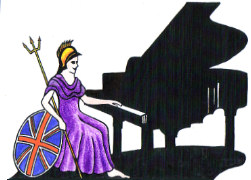Teachers, Accompanists and Piano Entertainers in the UK

UK Piano Page

184 St. Ann's Road
Haringey, London N15 5RP
England
J. Reids supply new and fully restored pianos from
142 Edgware Road
Marble Arch, London W2 2DZ
England
Jaques Samuel Pianos has been providing pianos
137A Grays Inn Road .
Bloomsbury, London WC1X 8TU
England
Peregrine's Pianos is the exclusive dealer in
111-113 Ewell Road
Surbiton, London KT6 6AL
England
We are one of the largest retailers of both new
5 Bridge St
Kettering, Northamptonshire NN14 6EW
England
As a family business, we have specialised in
Music Festival for performers and guests Our 10th
18-06-2022 01:30PM
The Morecambe Bay Piano Group was set up to extend
11-12-2021 02:00PM
The Morecambe Bay Piano Group was set up to extend
08-01-2022 02:00PM
The Morecambe Bay Piano Group was set up to extend
12-02-2022 02:00PM